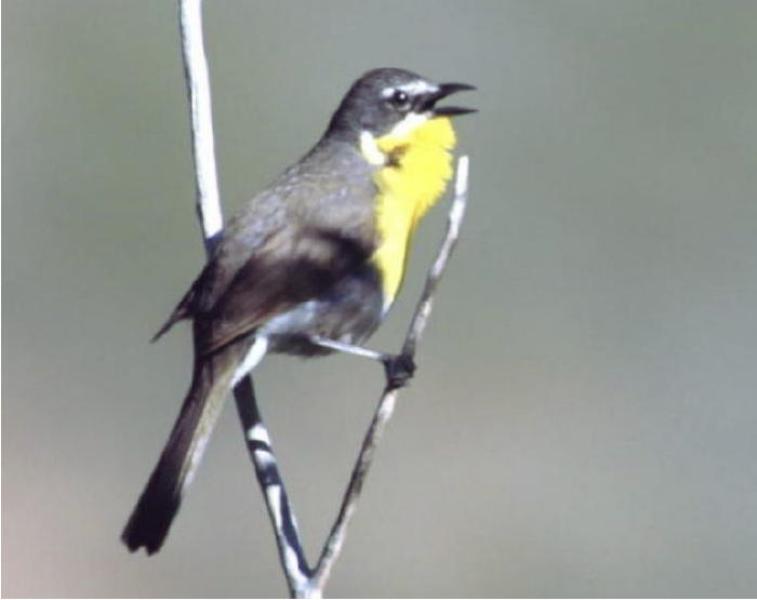The Yellow-Breasted Chat is well named
by Dave Hanks
Never has a bird lived up to its name so well. If one is in the surrounding vegetation, you will hear a most unmistakable series of calls. They range from chattering clucks, rattles, clear whistles, and squawks. Their repertoire is wide, loud, and often harsh but definitely not dull. The Chat is secretive and lives in dense thickets and brush. However, once you are familiar with its calls you’ll know, without a doubt, that a chat is in the vicinity.
The Chat is listed as our largest warbler (7 ˝”), but recent DNA tests have caused this classification to be disputed. However, like most warblers, yellow is a basic color. Another interesting DNA study has shown that up to a third of the chicks in a nest have been sired by a male other than the female’s mate.
The Chat’s bright yellow chest is very noticeable, and as it calls, its yellow throat puffs out as if it had a double chin. When the sun comes up to warm the cool morning air, the male will sit on a top branch solarizing and singing his heart out to greet the day and to proclaim his territory.
This bird made an indelible impression on me when I first became acquainted with it. The perky, vocal renditions were impressive to say the least, but to photograph a Chat was something else again. We have tried several times to connect with this reclusive fellow, only to be frustrated and forced to just listen to his amazing calls. Knowing that the Harrington Fork of Rock Creek in Twin Falls County is chat habitat, we tried once again on an early May morning. Luck was with us this time. My wife spotted one singing from a tangle of shrubs, and I set up our blind on the trail above that tangle. Patient waiting paid off. One perched close by and sang and sang and sang.
Sadly the species is in trouble because of decreasing habitat.
(Singing and solarizing)
|
